#circular economy
Text
"An estimated six million tonnes of used coffee grounds are created annually. Most go to landfill, generating methane and CO2, or are incinerated for energy.
It’s an obvious waste of a byproduct still rich in compounds (if not flavour). On a domestic level, try directing your cafetiere contents to your garden, not your bin: used coffee grounds are excellent as an addition to home compost bins and wormeries, a mulch for roses and a deterrent to snails. And on a global scale, science might have the answer.
A new study in the Journal of Chemical Technology and Biotechnology suggests that used coffee could hold the key to a pressing environmental problem: agricultural contamination.
How could old coffee grounds solve agricultural pollution?
Scientists from Brazil’s Federal Technological University of Paraná found that leftover coffee can absorb bentazone, a herbicide frequently used in agriculture.
When old coffee grounds are activated with zinc chloride, their carbon content becomes 70 per cent more efficient in removing the herbicide.
The study’s tests involved bentazone dissolved in liquid and treated with activated carbon from used coffee grounds, to see how it affected onion root tissues called meristems. All plants grow from meristem tissue and a plant’s development is disrupted when its meristems are damaged.
If the test can be replicated on an industrial scale, it would be an environmental double whammy: diverting coffee waste from landfill and preventing damage to wildlife and nature from herbicides.
Why is bentazone a problem?
...The UK’s Environment Agency cites bentazone as having the potential to affect long-term water quality and lead to an increased need to treat the UK’s drinking water sources. The herbicide has been shown to impact human health if it is inhaled, ingested or absorbed through the skin.
While this is only preliminary research and more studies are needed to determine efficacy of activated coffee grounds on a global scale, it’s a promising start. The authors of the study say their results “suggest a circular economy solution for spent coffee grounds that are currently discarded without any recycling or reuse system”. We can all drink to that."
-via EuroNews.green March 25/2024
#coffee#coffee grounds#circular economy#brazil#uk#united kingdom#pesticides#herbicides#environment#pollution#agriculture#good news#hope
290 notes
·
View notes
Text
A Canadian government plan to track plastics could help put more money into consumers' pockets and keep plastic waste out of landfills.
The government announced Tuesday it's seeking input on a new national plastics registry. Experts say it could create a lucrative system that encourages companies to salvage waste plastic and reimburse Canadians and retailers for dropping off scraps.
"Plastic waste is a commodity like anything else," said Calvin Lakhan, a research scientist at York University's faculty of environmental and urban change. "Right now, we're not doing a very good job of recycling our plastics."
The registry would track various plastic items produced in Canada. Everything from food and beverage containers to household appliances, clothing, tires and fishing equipment could fall under its scope. Government documents say the reporting requirements likely would apply to plastic producers, not consumers.
Continue Reading
Tagging @politicsofcanada
#cdnpoli#canada#canadian politics#canadian news#plastic#plastic recycling#plastic waste#zero waste#circular economy
129 notes
·
View notes
Text




José Zanine Caldas, "Canoa" Lounge Chair, 1970s,
Constructed from a used canoe, this armchair rejects modern forms of production, proposing instead a return to tradition. The armchair centers traditional Brazilian forms and woodcarving techniques. Stripped of any ornamentation or superfluidity, the design is centered around the beauty of the reclaimed pequi wood and the sublime simplicity of a traditional canoe form.
Noticeable tool marks allow the work of the craftsman to remain visible. With its focus on material and heritage forms, this piece perfectly encapsulates the designer’s artistic sensibility.
The canoa chair is a classic of Brazilian furniture design. What makes this piece special are the forms and proportions accentuated by Caldas. The piece is a Brazilian master’s deeply personal take on a seminal Brazilian form.
Recycled Pequi wood,
H:43.25 x W:29.50 x D:55.88 (H:110 x W:75 x D:142)
Courtesy: Carpenters Workshop Gallery
#art#design#sculpture#furniture#seat#forms#nature#brazil#pequi wood#canoa#heritage#carpentersworkshopgallery#canoe#lounge chair#1970s#josé zanine caldas#woodcarving#reclaimed wood#ecology#circular economy
33 notes
·
View notes
Text
The hair that drops in clumps on the floors of some salons in Kiel, a port city in northern Germany, is swept up to be turned into fabrics that filter oil from water. Parents who want to buy their children cloth nappies instead of disposable ones can apply for grants of up to €200 from the local authorities. At the city’s biggest festival last year, the organisers got rid of single-use cutlery and replaced it with a deposit system.
Germany is famed as a world leader in recycling – and Kiel, as I found out during a visit this summer, has some of the most weird and workable plans in the country to deal with its trash. It is the first German city to be declared “zero waste” by the environmental campaign group Zero Waste Europe. The certificate does not mean it has already stopped throwing things away – far from it – but rather that it has a concrete plan for how to do better.
“It’s one step in the right direction,” says Bettina Aust – a Green party politician who was elected president of Kiel city council in June – over a glass of juice made from apples that had been saved from landing in a supermarket bin. “You have to keep thinking further … You cannot stay still.”
Germany has a complicated relationship with waste. Despite its status as a world leader in recycling, Europe’s biggest economy is also one of its dirtiest. In 2021, the average German generated 646kg of waste, while the average EU citizen generated 530kg. Only in four EU countries – Austria, Luxembourg, Denmark and Belgium – did people throw away more.
Dino Klösen, a manager at Kiel’s waste management company ABK, says trends in the country’s consumption can be seen in its bins. Paper recycling bins that would have once been full of newspapers are now bursting with cardboard from delivery packages. “The weight of paper waste has dropped but the volume keeps rising from online shopping,” he says.
Awash with waste, cities like Kiel are exploring ways to throw away less and recycle more of what it does chuck. The city council has announced projects ranging from a ban on single-use items in public institutions, to installing more public drinking fountains, to teaching schoolchildren about waste. It is also encouraging people to make simple changes to their behaviour such as using solid bars of soap instead of buying plastic bottles of the stuff.
Other proposals are more systemic. The city is trialling a “pay as you throw” system where people are charged only for the rubbish they throw in the mixed waste bin. A report from the European Environment Agency last year found only about 30% of Germany is covered by such a scheme, even though areas that were covered saw an average drop in mixed waste of 25%.
“General waste is the most expensive form of rubbish there is,” says Klösen. “We are trying to motivate citizens to throw less waste in the bin by making them pay less for doing so.”
Even though waste-cutting efforts like Kiel’s are fairly novel in Germany, recycling is firmly rooted in the culture. In 2021, Germans collected more than two-thirds of their municipal solid waste to be repurposed – more than any other country in Europe. They burned most of the rest for energy, and dumped just 1% in landfills (the EU average is 16%).
25 notes
·
View notes
Text
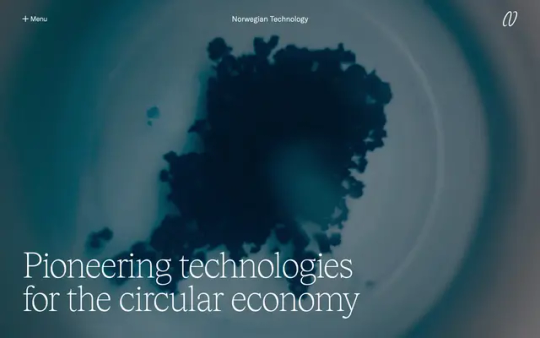
Norwegian Technology
#Norwegian Technology#circular economy#Norway#tech#blue#technology#typography#type#typeface#font#Tobias#GT America#2023#Week 29#website#web design#inspire#inspiration#happywebdesign
30 notes
·
View notes
Text
It is hard to stomach seeing what actually comes of our collective consumption – the waste that makes literal mountains, not to mention the waste of resources that are spent on dealing with it. ...
The costs have been staggering. Economic inequality and wars over non-renewable resources have killed untold numbers. The steep increase in products in recent decades has accelerated pollutant emissions, deforestation and climate breakdown. It has depleted water supplies and contributed to the rapid extinction of animals. ... Even if we accept the positives of mass consumption to date, we must acknowledge that the situation is unsustainable. And yet, we can’t seem to stop ourselves. ...
The primary responsibility for solving the environmental crisis belongs to businesses and governments. Those who produce materials, and those responsible for overseeing it, can act at the scale necessary for real change. “We’re fooling ourselves if we think that individual actions are going to move the meter. Every little bit helps, but public policy and corporations have to change.” ...
I find it naive to imagine that the world can simply do away with capitalism and the global economy in time to save our planet. In practice, the circular economy is not one approach but many. ... Although this range of approaches in some measure fractures the movement into parts, it also means that we can look to these different experiments to see what works and what doesn’t. This moment of emergency requires immediate action, and for now that must mean collaborating with the companies that make our modern world.
It does not mean acquiescence, however. All of us must do our part to push those in power to create real and meaningful change, even as we must seek to make real and meaningful change in our own lives.
18 notes
·
View notes
Text

View on Twitter
(Source)
90 notes
·
View notes
Text
Earth Overshoot Day 2022
2022's Earth Overshoot Day is today, the 28th of July.
This date marks the day when humanity has used all of the biological resources that Earth regenerates during the entire year for 2022.
Earth Overshoot Day is an annual campaign by the Global Footprint Network. You can find their methodology on their website.
If you'd like inspiration on how to take climate action, check out their solutions page or take a look at my collection of resources on fashion and climate change.
#wasteless crafts#climate change#global warming#tw climate anxiety#tw eco anxiety#earth overshoot day#earth overshoot day 2022#global footprint network#movethedate#ecology#economy#circular economy#sustainability#climate action#climate activism
119 notes
·
View notes
Text
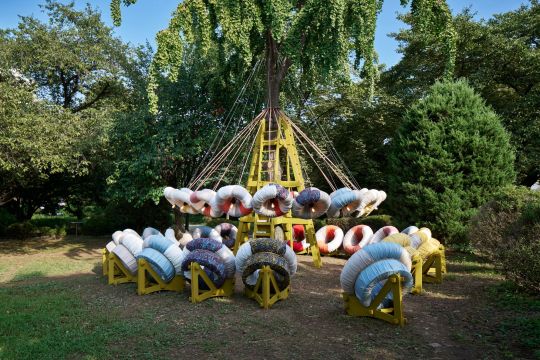



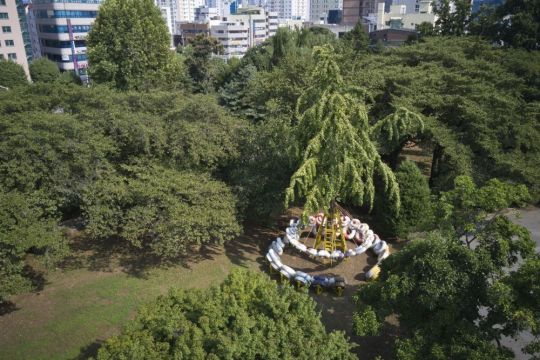


Bojagi Lounge, Anyang, Gyeonggi province, South Korea,
"ZONE 7: Your Imaginary Space," Anyang Public Art Project (APAP),
Izaskun Chinchilla Art,
Photograph by DongWoong Lee
#art#design#outdoor#lounge#bojagi#south korea#anyang#zonz7#APAP#izaskun chinchilla#sunbrella#fabric#textile#installation#circular economy#household economy#doughnuts#norigae
13 notes
·
View notes
Text
"Of South Korea’s countless kilograms of annual food scraps, very few will ever end up in a landfill. This is because of two reasons—the first is that it’s been illegal since 2005, and the second is because they have perhaps the world’s most sophisticated food waste disposal infrastructure.
While representing a significant burden on the economy, the food waste disposal nevertheless produces ample supplies of animal feed, fertilizer, and biogas that heats thousands of homes.
As the New York Times’ John Yoo and Chang Lee reported from Seoul, South Korean cuisine tends to lend itself to creating food scraps, since many staple dishes come with anywhere from a few to a few dozen sides.
With the culture erring on the side of abundance rather than restraint, many of these small dishes of tofu, kimchi, bean sprouts, and other bites would be tossed in the landfill if it wasn’t illegal to do so.
The government put the ban hammer on it because the mountainous terrain isn’t ideal for landfill construction.
Instead, restauranteurs and street hawkers pay the municipality for a sticker that goes on the outside of special bins. Once filled with food scraps, they are left on the road for collectors in the morning who take 90% of all such waste in the country to specialized collection facilities.
At apartments and among residential housing areas, hi-tech food waste disposal machines are operated by a keycard owned by residents under contract with the disposal companies.
Once taken to the recycling facilities, the food is sorted for any non-food waste that’s mixed in, drained of its moisture, and then dried and baked into a black dirt-like material that has a dirt-like smell but which is actually a protein and fiber-rich feed for monogastric animals like chickens or ducks.
This is just one of the ways in which the food scraps are processed. Another method uses giant anaerobic digestors, in which bacteria break down all the food while producing a mixture of CO2 and methane used to heat homes—3,000 in a Seoul suburb called Goyang, for example. All the water needed for this chemical process comes from the moisture separated from the food earlier.
The remaining material is shipped as fertilizer to any farms that need it.
All the water content is sent to purification facilities where it will eventually be discharged into water supplies or streams.
While one such plant was shut down from locals complaining about the unbearable smell, many plants are odorless, thanks to a system of pipes built into the walls that eliminate it via chemical reaction.
It’s the way South Korea does it. Sure, it costs them around $600 million annually, but they have many admirers, including New York City which hopes to implement similar infrastructure in the coming years."
-via Good News Network, June 15, 2023
#south korea#korean food#kimchi#bean sprouts#food waste#landfill#circular economy#sustainability#waste disposal#sanitation#good news#hope#hope posting#new york city#restaurants
490 notes
·
View notes
Text
42 notes
·
View notes
Text
The EU gives final green light to removable batteries in mobile phones from 2027 on.

The regulation also establishes a calendar for the recycling of batteries from different devices
The European Council has given the green light last Monday to the new regulation[1] that will make it easier for consumers to change portable batteries in mobile phones and other electronic devices from 2027[2] on, for which date they must be easily removable by users. With this, the Twenty-seven support the provisional political agreement reached last December with the European Parliament on new rules for the design, production and waste management of all types of batteries sold in the EU. The regulation will be signed by the European Council and the European Parliament before it is published in the Official Gazette of the EU and enters into force 20 days later.
This standard aims to create a circular economy for batteries by addressing all stages of the life cycle of these products, from design to production and waste treatment. This initiative is of great importance, since the demand for batteries is expected to increase tenfold in 2030.
The regulation establishes that portable batteries incorporated into devices must be removable and replaceable by the end user by 2027 at the latest, allowing sufficient time for operators to adapt the design of their products to this requirement.
“Batteries are key to the decarbonisation process and the EU shift towards zero emission modes of transport. At the same time, end-of-life batteries contain many valuable resources[3] and we need to be able to reuse those critical raw materials instead of relying on third countries for supplies. The new standards will promote the competitiveness of the European industry and guarantee that the new batteries are sustainable and contribute to the ecological transition”, said Teresa Ribera, third vice president of the Spanish Government and minister for the Ecological Transition and the Demographic Challenge, at the meeting of Ministers of Energy and Environment held in Valladolid.
The regulation will apply to all batteries, including all waste portable batteries; from electric vehicles; from industrial devices; permitting to start, light-up and ignite (SLI), mainly used for vehicles and machinery, and for light means of transportation, such as electric bicycles, electric mopeds and electric scooters.
Circular economy
The new rules aim to promote a circular economy by regulating batteries throughout their life cycle. Therefore, the regulation sets requirements for end of life, including targets and obligations for collection, as well as for material recovery and extended producer responsibility.
The regulation establishes targets for producers to collect portable battery waste (63% by the end of 2027 and 73% by the end of 2030), and introduces a specific collection target for used batteries for light means of transport (51 % by the end of 2028 and 61% by the end of 2031). In addition, there is a target for the recovery of lithium from used batteries (50% by the end of 2027 and 80% by the end of 2031). The latter can be modified by delegation of authority depending on the market and technological advances and the availability of lithium. It also includes mandatory minimum levels of recycled content for industrial batteries, SLI and electric vehicles (16% for cobalt, 85% for lead, 6% for lithium and 6% for nickel.
Finally, the regulation introduces labelling and information requirements, among other things, on battery components and recycled content, and an electronic 'passport' and QR code. In order to give Member States and economic players on the market enough time to prepare, the labelling requirements will have to be applicable from 2026 and the QR code from 2027.
Source
Redacción, La UE da luz verde definitiva a las baterías extraíbles en los teléfonos móviles a partir de 2027, El País, 10-7-2023, https://elpais.com/economia/2023-07-10/la-ue-da-luz-verde-definitiva-a-las-baterias-extraibles-en-los-telefonos-moviles-a-partir-de-2027.html
[1] https://www.europarl.europa.eu/news/en/press-room/20230609IPR96210/making-batteries-more-sustainable-more-durable-and-better-performing
[2] Removable batteries and single charger for the mobile, the difficult dream of the EU. Brussels wants the 'smartphones' to reopen from behind and a universal connection, but collides with the opposition of the manufacturers. https://elpais.com/economia/2022-05-09/baterias-extraibles-y-cargador-unico-para-el-movil-el-dificil-sueno-de-la-ue.html
[3] The three bites of planned obsolescence to the environment. Designing to shorten product life generates more e-waste, but also higher emissions due to increased material extraction and factory activity. https://elpais.com/retina/2020/03/09/tendencias/1583740212_343832.html
8 notes
·
View notes
Photo


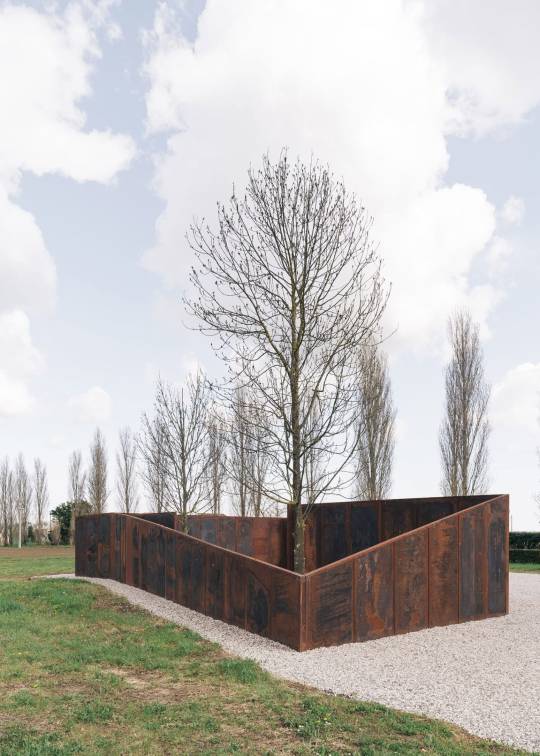

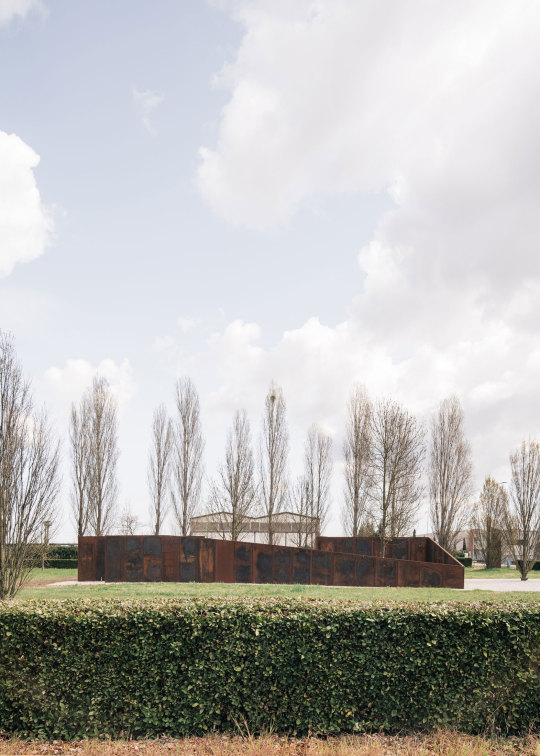



Upcycling Pavilion Icarus Open Air Museum, Corbola, Italy,
MePart 's mission is to develop projects and tools in the field of Design in favor of experimenting with new scenarios for the re-distribution of the value generated by the cultural resources of temporary events.
MePart / Barman Architects
#art#design#landscaping#upcycling#pavilion#icarus#museum#cordoba#italy#barman architects#temporary#structure#sculpture#mepart#circular economy#metal#rusted
68 notes
·
View notes
Text



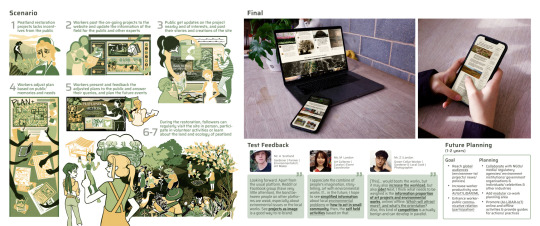
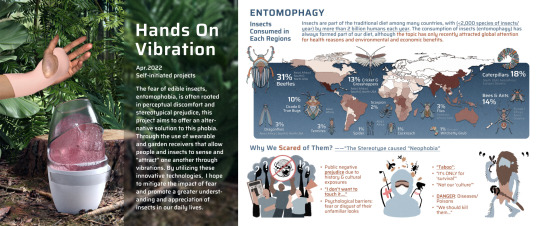
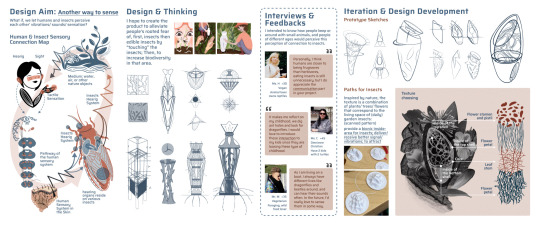

#products#ui ux development services#design#innovation#technology#website#community#website design#environment#ecology#circular economy#locality#openai#dalle2#midjourney#ai artwork#artificially generated#testing#3d model#product design#web graphics#illustration#visualization#storyboard#branding
14 notes
·
View notes
Text
What's Old is New Again - Deconstruction
Are trees on buildings the #solarpunk equivalent of #steampunk's oft-maligned, "just stick some gears on it?" For an actual #regenerative #future, we'll need to #reuse #materials more effectively. #cradle2cradle #circulareconomy #deconstruction
Photo by Tiff Ng on Pexels.com
I recently saw several complaints about the preponderance of tree-stuffed glass towers or eco-brutalist structures in solarpunk art. Are trees on buildings the solarpunk equivalent of steampunk’s oft-maligned, “just stick some gears on it?” For an actual regenerative future, we’ll need to keep our buildings in use longer and reuse the materials from them more…

View On WordPress
57 notes
·
View notes
Text
measuring progress toward the circular economy
This article proposes a circularity index to measure how close various European countries are to a circular economy.
View On WordPress
2 notes
·
View notes